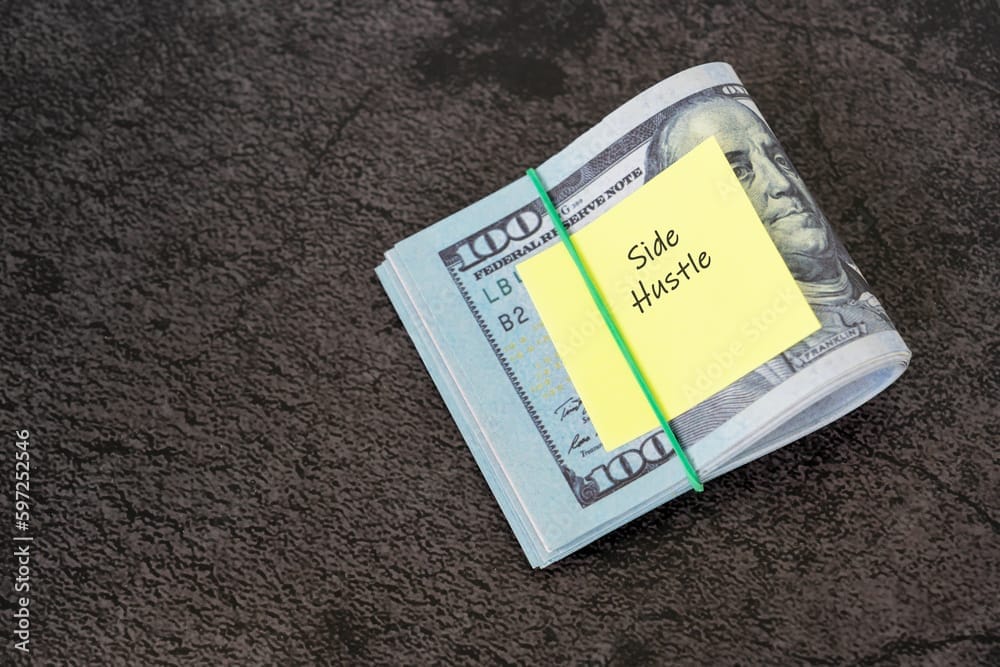Student loans are…heavy.
That’s it.
They’re. Just. Heavy.
They’re a weight that we carry around long before we even make the first repayment. Sometimes that weight feels so heavy, it’s hard to imagine it ever going away.
And as much as we wish we could, we can’t ignore our student loans.
One way or the other, we have to get rid of them.
And when we do get rid of them for good, there might not be a better personal finance feeling in the world. Personally, I’ll never forget the day I made my last payment and shared the news with my future wife and family.
To help you have that same feeling of accomplishment, here are my top 10 student loan tips for lawyers and professionals.
Top 10 Student Loan Tips for Lawyers and Professionals
- Locate all your loans.
- Sign up for automatic payments.
- Do not miss a payment.
- Consider using Debt Snowball or Debt Avalanche.
- Make an extra monthly payment.
- Create a BAT that generates fuel for your student loans.
- Make more money and use that money for your loans.
- Take a tax deduction and use your tax refund for your loans.
- Consider a loan consolidation.
- Look for ongoing scholarship opportunities.
1. Locate all your loans.
As a first step, be sure that you are aware of all of your loans. Most people end up needing both federal loans and private loans, which are not tracked by the same loan servicers.
Additionally, you may have taken out different types of loans at different stages of your education. It’s not uncommon to forget about some of those loans.
Before you can implement a thoughtful strategy to pay back your loans, you need to ensure that all of your loans are accounted for.
The best place to locate all of your loans is on your credit report. The next best option is to ask your school’s financial aid office.
A credit report is a document that tracks your history of repayment and the current status of any loans you’ve taken out.
You are entitled to receive a free copy of your credit report from each of the three main credit reporting agencies every year. To do so, simply visit annualcreditreport.com.
For federal loans, you can also check online at studentaid.gov. But, your private loans won’t be tracked by the federal government at studentaid.gov.
Besides checking your credit report, you can access all your private loan information from your loan servicer.
Once you’ve identified all your loans, you can implement a strategy to pay them off efficiently.
2. Sign up for automatic payments.
By signing up for auto pay, you can save .25% interest on your federal loans. Many private loan companies also offer a .25% discount for using auto pay.
Over time, those savings will add up. And, there’s really no downside to you.
In fact, you should be using automatic payments even if your loan servicer does not offer a discount.
When it comes to paying back loans or achieving any other financial goal, automating your money is a very good idea. In The Automatic Millionaire, David Bach thoughtfully explains how the single step of automating your finances can help you achieve all of your financial goals.
You can learn more about Bach’s philosophy on his website.
I personally implement many of Bach’s strategies in my own life. I used to automate my student loans payments. Now, I automate my mortgage payments.
The Automatic Millionaire is definitely worth a read.
3. Do not miss a loan payment.
You know that expression, “Act now, apologize later”?
That absolutely does NOT apply to loan payments.
No matter how responsible or well-intentioned you are, sometimes life happens. Whether it’s technically your fault or not, a missed loan payment is a big problem.
It may seem unfair, but even a single missed payment can severely impact your credit history and credit score.

Because the consequences of a missed payment are so severe, this is another reason why setting up auto payments is such a good idea.
If you know ahead of time that you won’t be able to make a payment, it is imperative that you notify your loan servicer ahead of time. Your loan servicer may be able to work with you and figure out a solution before major consequences set in.
4. Consider using Debt Snowball or Debt Avalanche to pay off your student loans.
When you apply the Debt Snowball strategy, the idea is to focus on the loan with the smallest balance first, regardless of interest rate.
Once you have paid off the first loan in full, you move to the loan with the next smallest balance, again regardless of interest rate. The money you had been paying to the first loan can now be rolled into the second loan.
When you apply the Debt Avalanche strategy, the idea is to prioritize the loan with the highest interest rate, regardless of the balance.
Once you’ve paid off the loan with the highest interest rate, you move to the loan with the next highest interest rate. Just as before, the money you had been paying to the first loan can now be applied to the second loan.
Either approach works perfectly for paying off multiple student loan balances. Regardless of which method you choose, always pay the minimum required amount on all loans every month.
For more on the pros and cons of each method, check out our deep dive on Debt Snowball v. Debt Avalanche.
5. Make an extra monthly payment for massive savings.
You may be surprised how big of an impact even a small additional payment each month can have on your loans.
Let’s look at an example.
Let’s say you owe $100,000 in student loans and currently pay back $1,250 per month with an 8% interest rate.
Using calculator.net, you learn that at this pace, it will take you 9 years and 7 months to pay off your loans. You’ll pay back a total of $143,377.94.

Now, let’s imagine you are able to pay back an additional $100 per month.
Look what happens:

You can eliminate your loans an entire year sooner and save $5,040.13 in interest payments. Just with an extra $100 per month!
What about if you are able to pay back an extra $250 per month?
This is when I start to get excited.
Check this out:

For just $250 per month, you can knock off 2 years and 2 months of loan repayments and save $10,684.35 in interest!
Think about how good it will feel to get 2 years and 2 months of your life back without loan payments.
How are you supposed to come up with an extra $100, $250, or more per month?
I’m glad you asked.
6. Create a Budget After Thinking that generates fuel for your student loans.
If you want to pay off your student loans faster, you really only have two options.
The first option is to create a Budget After Thinking that prioritizes loan repayment. One of the key purposes of budgeting is to generate fuel for your future goals, including eliminating student loan debt.
Instead of letting your hard-earned dollars disappear, put them to good use. Even $100 a month can make a big difference, as we just saw.
If you’re having a hard time generating additional fuel for your student loans, check out my 10 Tips to Win the Budget Game.
So, the first option to pay off your loans faster is to create a budget and spend less money elsewhere.
What’s the second option?
7. Make more money and put those extra earnings directly to your loans.
If you’re not going to cut spending in favor of student loan repayment, then your only other option is to make more money.
That might mean getting a valuable side hustle. Or, it might mean earning a raise or a bonus at your primary job.
Whatever the case may be, as you make more money, focus on improving your savings rate.

Your savings rate is simply the amount of money you save each month divided by the amount of money you make.
Even though it’s called “savings rate,” there’s no reason why you can’t include debt repayment in your calculations. Whether you are adding money to a savings account or eliminating debt, your net worth improves.
It all counts in my book.
The point is that when you start to earn more money, put that money to good use.
Instead of shopping at more expensive stores or eating at fancier restaurants, keep your spending habits the same. Put those higher earnings towards your important life goals, like eliminating student loan debt.
8. Take a tax deduction and use your tax refund for your loans.
The IRS permits borrowers, up to certain income limits, to take a federal tax deduction up to $2,500 per year for student loan interest payments. That means that you can reduce your taxable income by up to $2,500 per year based on the interest you paid that year.
The actual amount of money you’ll save with this tax deduction depends on variables like your tax bracket. Check with your accountant or tax professional for specifics.
Regardless, as we’ve seen above, even a small amount of extra money can go a long way if used for additional student loan debt payments.
In the same vein, what if you made it a goal to apply your entire tax refund to your student loan debt?
Let’s return briefly to our example above.
This time, let’s assume that each year, you receive a tax refund of $1,700. Instead of wasting that $1,700 annually on things you don’t care about, you decide to put that money directly towards your student loans.
Look what happens when you apply that $1,700 tax refund to your student loans each year, without making any additional payments whatsoever:

With just that one decision to use your annual tax refund for student loan payments, you knock off 1 year and 4 months of payments and save $6,099.26!
That seems like a great use of money that you’ll never miss anyways.
9. Consider a loan consolidation.
Consolidating your various loans into a single loan can help make your life easier and save you money.
Your life should get easier when you only have to track and pay one loan back each month. There’s also a much smaller chance that you forget to make a payment or lose track of a loan altogether.
Besides the convenience, when you consolidate, you should receive an overall lower interest rate. That means long-term savings.
Before you consider a loan consolidation, be sure to do your homework. One major consideration is that you will lose whatever federal loan benefits you currently have if you consolidate, such as the possibility for loan forgiveness.
10. If you’re still in school, look for ongoing scholarship opportunities.
This is something that didn’t occur to me until my final year of law school. It took me that long to realize that schools regularly offer scholarships, stipends, and grants to current students, not just prospective students.
During my third year of law school, I applied for a scholarship and was awarded $2,000. I didn’t think of it at the time, but looking back, I could have used that $2,000 to prepay my student loan interest.
That would have accelerated my progress towards eliminating my loans while I was still in school.
This is a good time to point out that personal finance requires consistent attention. You don’t have to think and talk about money every day. Not even I want to do that.
But, you do have to intentionally make your personal finances a regular part of your life.
Let’s revisit our example once more.
Sorry, I can’t help myself.
What if you combined some of the 10 tips we just talked about?
Let’s say you decide to make an extra $250 monthly payment, contribute your $1,700 tax refund annually, and make a one-time payment of $2,000 for a scholarship you earned while finishing up school.
Let’s take one more look at calculator.net:

With just three relatively painless decisions, you can knock off 3 years and 1 month of student loan payments! And, you’ll save $15,481.76!
Think about what you could do with an extra 3 years and 1 month of your life without student loan payments.
You can now use that $1,500 per month you had been using for student loans on other goals. Not to mention what you could do with your annual tax refund.
On top of that, think about what you could do with that $15,481.76 you saved in interest payments.
Decisions like these are how financial freedom happens.
That’s powerful stuff.
What are your favorite student loan repayment strategies?
To recap my top 10 student loan tips for lawyers and professions:
- Locate all your loans.
- Sign up for automatic payments.
- Do not miss a payment.
- Consider using Debt Snowball or Debt Avalanche.
- Make an extra monthly payment.
- Create a BAT that generates fuel for your student loans.
- Make more money and use that money for your loans.
- Take a tax deduction and use your tax refund for your loans.
- Consider a loan consolidation.
- Look for ongoing scholarship opportunities.
- Have you applied any of these strategies?
- What am I leaving out that has worked for you?
Let us know in the comments below.





